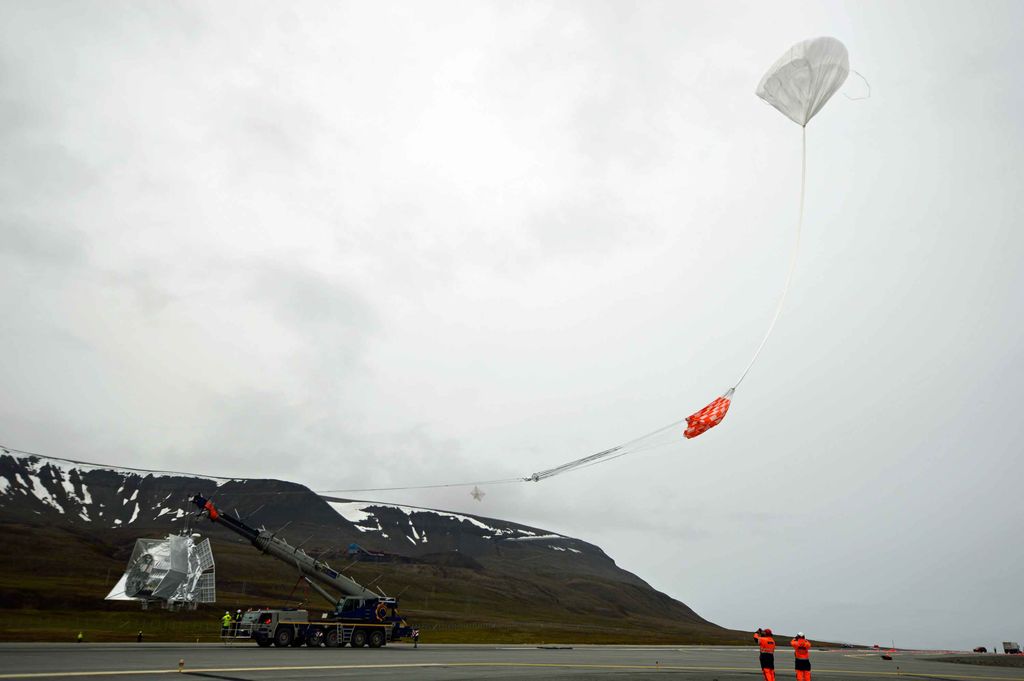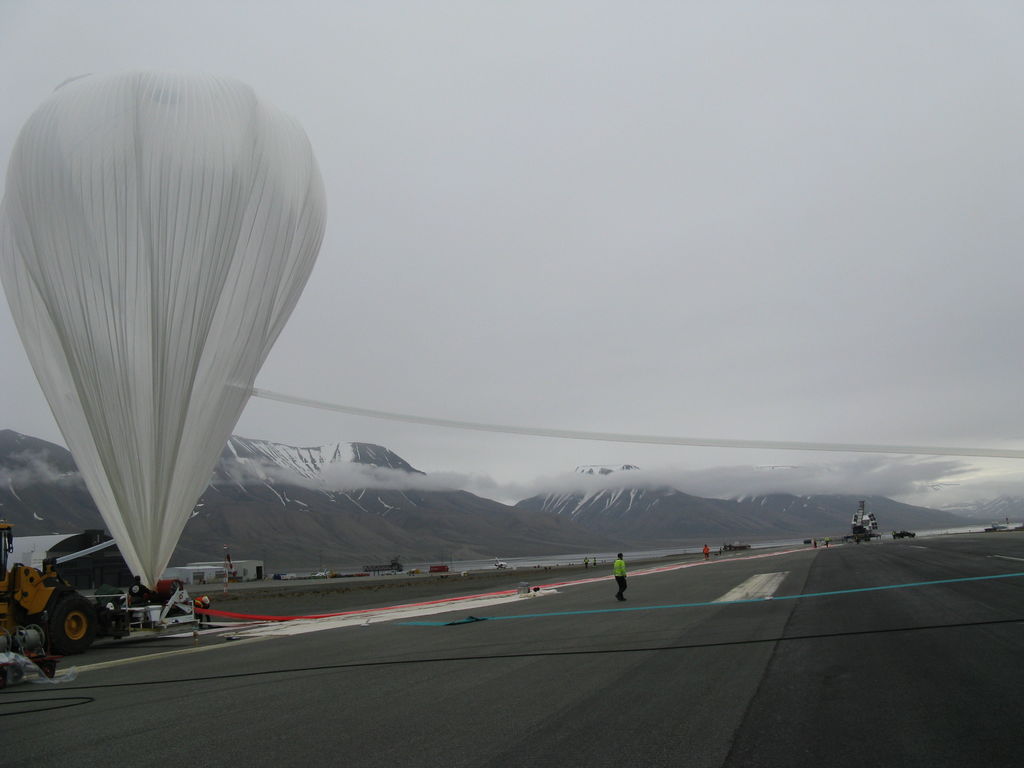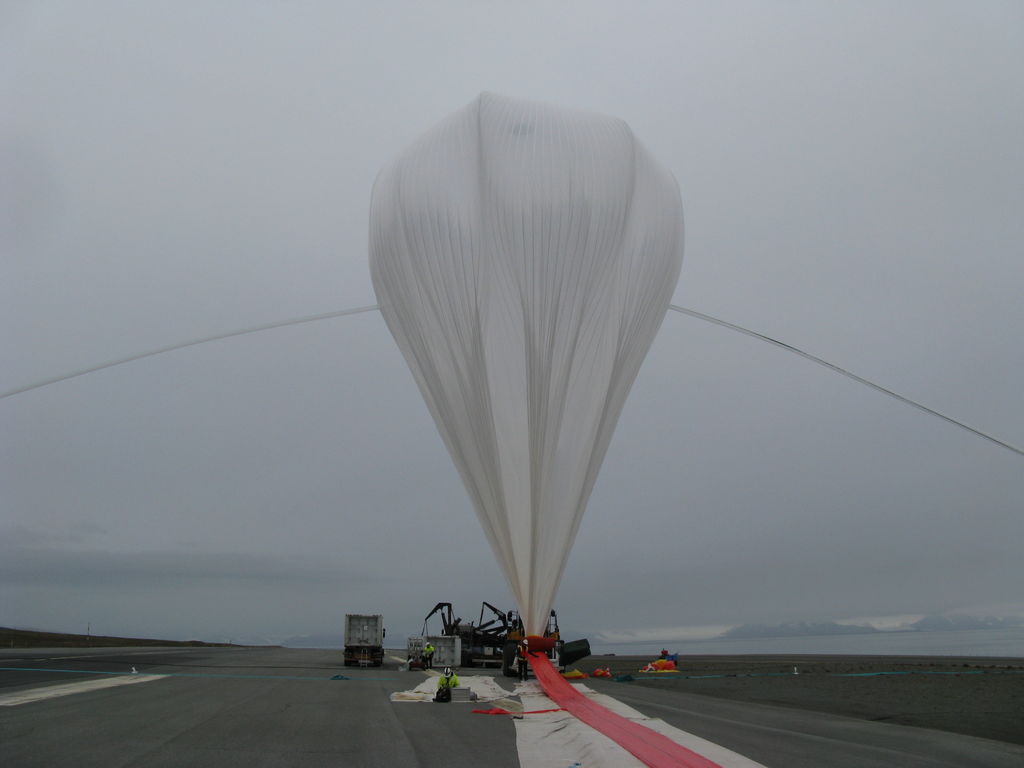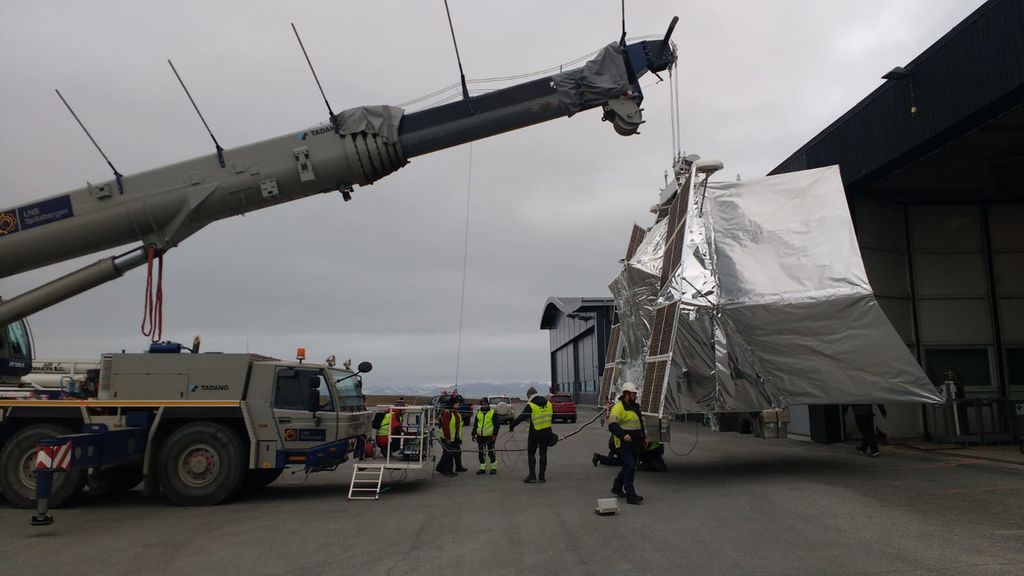
A backlight view at Galaxy Clusters: OLIMPO
The balloon-borne mm-wave telescope OLIMPO has been launched into near space from the Arctic airport of Longyearbyen, at 09:07 CET of July 14th, 2018. OLIMPO is aimed at cosmological observations of the Cosmic Microwave Background in the direction of clusters of galaxies.
The instrument has been developed by a research team coordinated by prof. Silvia Masi of the Physics Department of Sapienza University, in collaboration with the Institute for Photonics and Nanotechnologies of CNR (Rome), the Institute for Applied Physics of CNR (Florence), the Universities of Bicocca (Milan), Cardiff (UK), Arizona State (USA) and Niznij Novgorod (Russia).
The delicate observations of clusters of galaxies at these wavelengths are obtained from an altitude higher than 35 km, to avoid the opacity and noise of the earth atmosphere. A helium-filled balloon with a volume of 830000 cubic meters has been used to lift the two-tons instrument in the stratosphere (37.8 km), where it will float for several days to carry out the observations. From such an advantage point, OLIMPO can observe galaxy clusters at frequencies up to 500 GHz. These are much higher than those around 150 GHz of ground based telescopes operated from Antarctica and from the Atacama desert to the same purposes. For the very same reason OLIMPO covers a much wider frequncy range, using an innovative differential spectrometer. The result is a set of very accurate measurements, allowing a reliable discrimination between the signal from distant clusters of galaxis and any form of local contamination.
“Our universe – explains Silvia Masi – is filled with huge filamentary structures of dark matter and galaxies. Galaxy clusters are formed at the crossings of such filaments, and include stars organized in galaxies, intergalactic gas, and large amounts of dark matter. With OLIMPO we observe the cosmic microwave background, and use its interaction with the intergalactic gas to map clusters of galaxies, so far away that they are not visible by other means. In addition, wih OLIMPO we can map their structure all the way to the extreme periphery.”
“The telecope – adds Paolo de Bernardis, of the Sapienza University – is equipped with extremely sensitive custom-made arrays of microwave detectors, so that very weak signals can be mapped in full detail, obtaining sharp maps of the intergalactic gas. After this stratospheric validation, these same detectors will be used in new space missions, which are being prepared for future deep surveys of the detail properties of the cosmic microwave background. In addition, these same detectors have many other applications, ranging from medical diagnostic to telecommunications to environment control”.
In summary, OLIMPO is an extraordinary cosmological investigation machine, and also a uinque test bench for a variety of advanced technologies and investigation methods using mm-waves.
For Further Information
Silvia Masi
Department of Physics, Sapienza University
silvia.masi@roma1.infn.it







